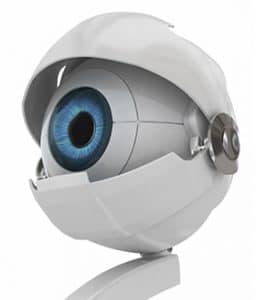JCPenney: A fatal lack of bravery
I swear, I try to avert my eyes—but I keep getting drawn into the sad saga of JCPenney. Why is that?
Morbid fascination? Schadenfreude? Personal guilt? (I had a hand in two years’ worth of JCP’s ads on the Oscars.)
Actually, I’m not that deep. It’s just that JCP’s failure has been more like a decade-long crumble, and it has such great lessons to offer.
Once “America’s Favorite Store,” JCP has now filed for bankruptcy protection. A single share of JCP stock, once priced over $83, goes for 18 cents as I write this.
It’s tempting to cut JCP a break, since the current crisis has hurt so many companies. But—this crisis only pushed JCP over the edge of the cliff where it was already perched.
So what led to JCP’s fall? Where do we start. Tired products? Misguided strategy? Poor management? Actually, hindsight now illuminates the root cause of all these things—
Extraordinary lack of backbone.
The sad thing is that once upon a time JCP did have a backbone. A big one. It bucked tradition and put the whole industry on notice.
The year was 2011. CEO Myron Ullman, who had doubled JCP’s stock price midway through his tenure, was then presiding over a three-year, 65% decline in company value.
The old shoppers weren’t spending enough, and the younger, more affluent shoppers weren’t interested. In their eyes, America’s Favorite Store had become Grandma’s Favorite Store.
JCPenney had to transform or die.
It chose transformation by hiring Ron Johnson from Apple. Over 11 years, Johnson had built Apple’s mega-successful network of more than 200 Apple Stores worldwide. He was smart, energetic and creative—the man who would reinvent JCP for the internet age.
Johnson’s hiring sent JCP stock soaring. Months later, when he unveiled his vision of reinvention, the stock shot up again. The future looked amazing—until it wasn’t.
Over the next 18 months, JCP crashed and burned. The Board lost confidence in Johnson less than two years into a five-year plan they had so enthusiastically approved.
At this point, the Board could have hired a new CEO with a new plan for transformation. Or it could withdraw into its shell and search for a “safe” route back to profitability.
They chose Door #2. And so began JCPenney’s Era of Spinelessness.
Fearing all risk, the Board chose not to move forward, and moved backward instead. It was all about “winning back the old customers,” and returning to the good old days before Johnson was hired.
Unfortunately, those days had disappeared long before Johnson. That’s why they hired him in the first place.
Over the next five years, the Board brought in three different CEOs. Each checked a number of boxes—except the ones marked “innovator” and “visionary.”
First, the Board brought back Ullman for another go. He set out to erase all traces of Johnson’s tenure, throwing out the baby with the bathwater.
Having once presided over a 65% decline JCP value, Ullman led the company to another 58% decline.
Next up as CEO was the un-visionary Marvin Ellison, plucked from The Home Depot. He dropped JCP’s value another 66%.
Now twice burned, the Board dipped deeper into the traditional, hiring Jill Soltau from that icon of innovation, Joanne Fabrics. Somehow she’s still CEO—despite lowering the company’s value a whopping 88%.
Looking back, it’s as if the JCP Board had its backbone surgically removed following Johnson’s tenure. Transformation became a dirty word when transformation was the only path forward.
Over the reign of three CEOs who came after Ron Johnson, the company has lost 93% of its value. JCPenney has literally become a penny stock.
The good news is that JCP isn’t dead yet. It’s on life support in the bankruptcy emergency room, but there’s still a heartbeat.
Can anyone make JCP fresh, relevant and exciting for today’s shoppers? Or transform 850 musty department stores into something more alluring? Or create a destination that shoppers can’t find online?
Maybe someone like … a visionary?


I hope it dies. It’s day is over. No reason to exist if you can’t see or envision the future.
Makes me wonder if any sizable brick-and-mortar retailer can pivot? Imagine the kickback that must happen from all that institutional thinking. It’s almost like big companies have to adjust midstream (be willing to renew themselves or at least constantly iterate small segments of their biz) and not wait for the calamity of being force to gut everything at once.
I think any big company that’s been successful for a number of years is making adjustments as trends and buying habits change. That’s just being smart. In an awful way, JCP is actually performing a public service—demonstrating that putting off necessary changes while they are manageable only makes it more likely that you’ll end up fighting for survival.
It was Ellen. Half human, half chicken. Think about it.